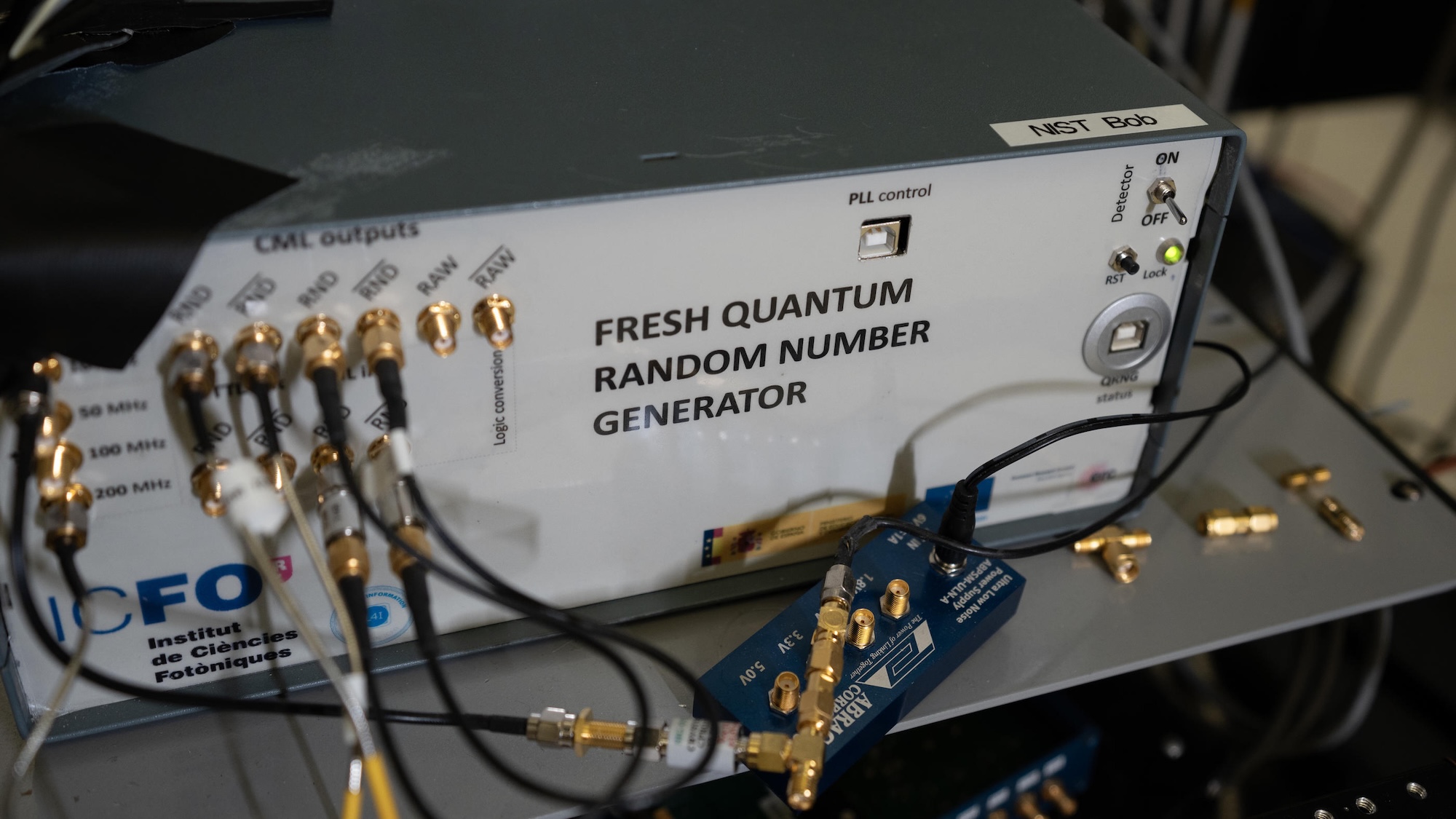Now Reading: Quantum Physics Unlocks the Secret to True Random Number Generation
-
01
Quantum Physics Unlocks the Secret to True Random Number Generation
Quantum Physics Unlocks the Secret to True Random Number Generation

Quick Summary
- Researchers at the National institute of Standards and Technology (NIST) and the University of Colorado Boulder have developed a quantum random number generator system called the Colorado University Randomness Beacon (CURBy).
- CURBy relies on quantum mechanics concepts, specifically Bell tests using entangled photons, to produce true randomness.
- The process involves sending entangled photon pairs through optical fibers to separate laboratories, analyzing polarizations repeated at 250,000 iterations per second.
- Initial tests generated true randomness successfully in 99.7% of cases over its first 40 days.
- Users can utilize CURBy via its website to randomly shuffle lists based on day-to-day quantum-persistent randomness.
- This system automates what was once laborious experimental work and is now offered as a free public service.
Indian Opinion analysis
The breakthrough in quantum random number generation has global implications for technologies relying on secure cryptographic algorithms or unbiased statistical models-the foundation for many modern systems like financial services or cybersecurity. india’s scientific community might see this as an chance to engage further in research collaborations in quantum computing and mechanics-fields critical for driving innovation domestically. Additionally, access to true randomness from such tools coudl bolster local advancements in AI applications requiring unbiased data sets and enhance transparency within governmental tech initiatives reliant on randomized data.




























